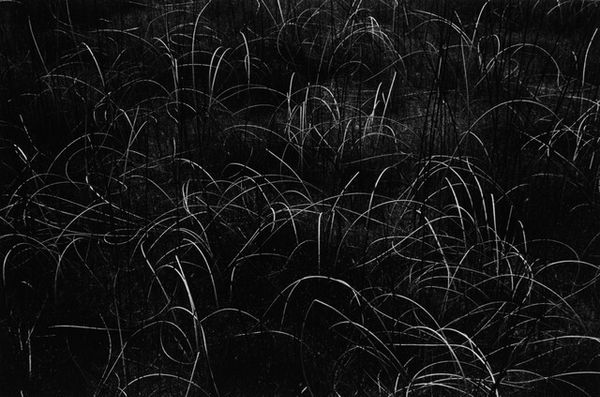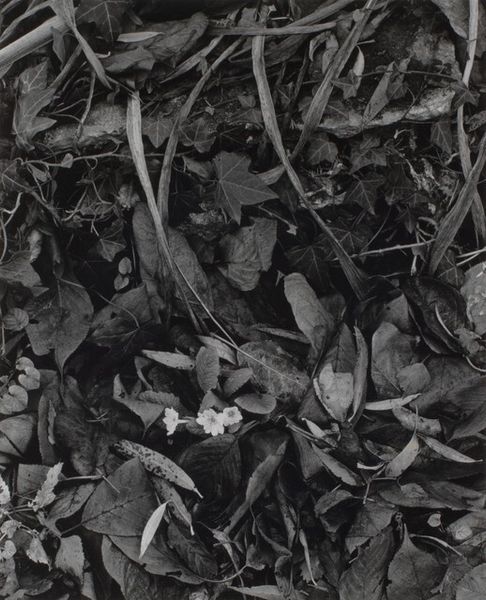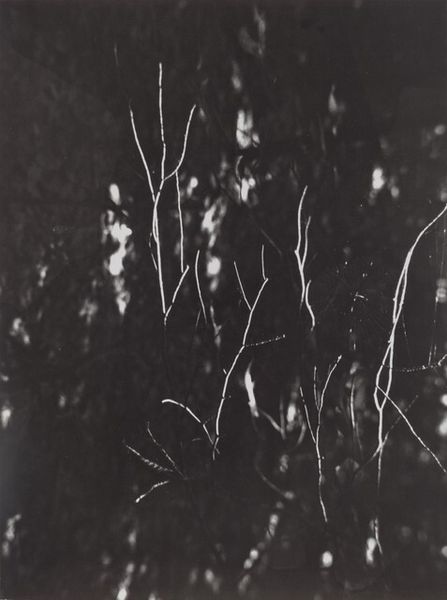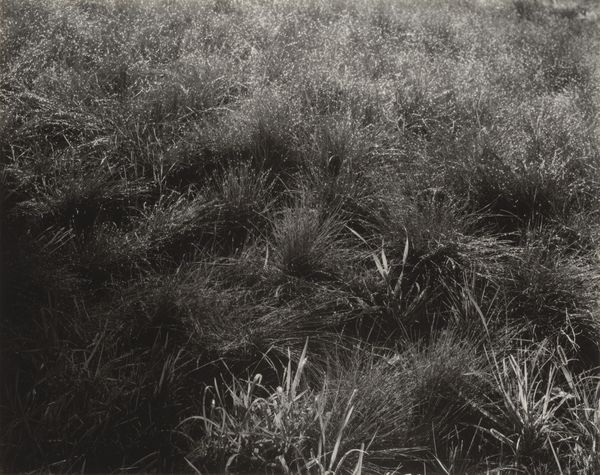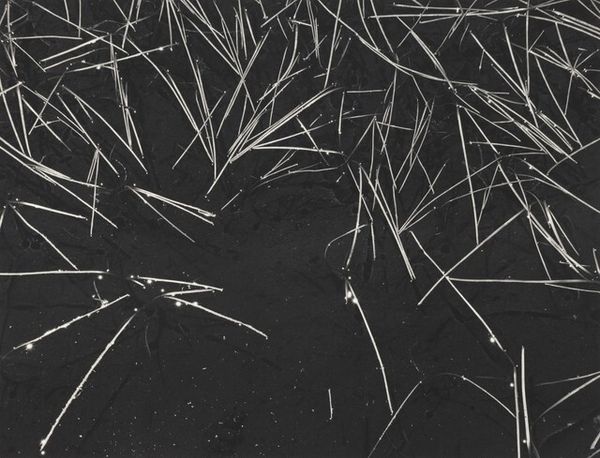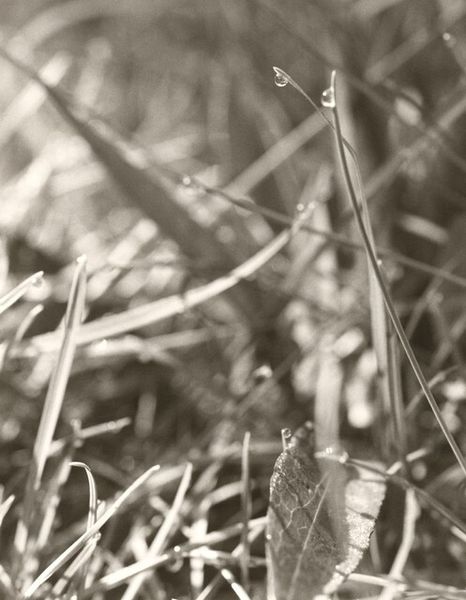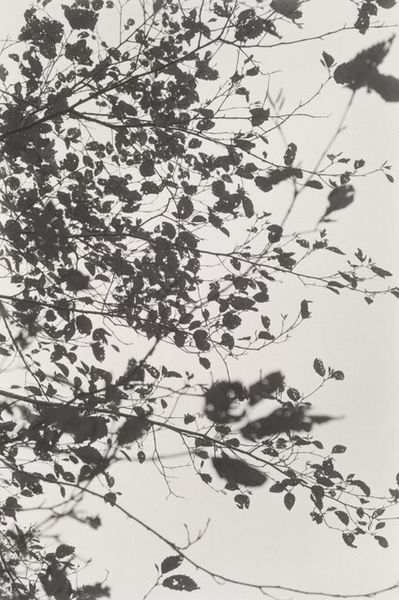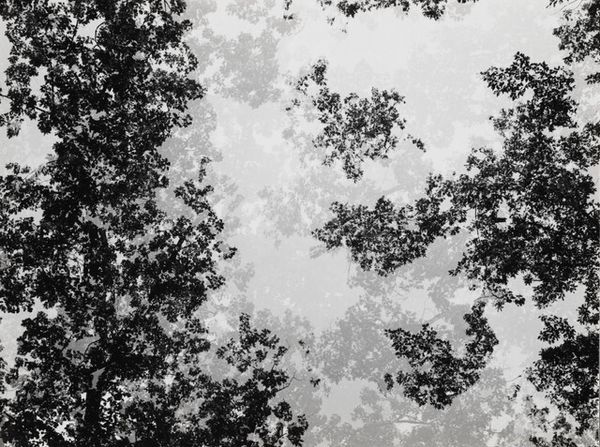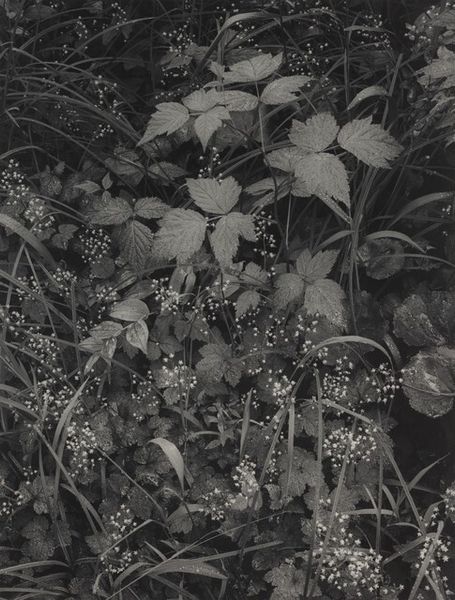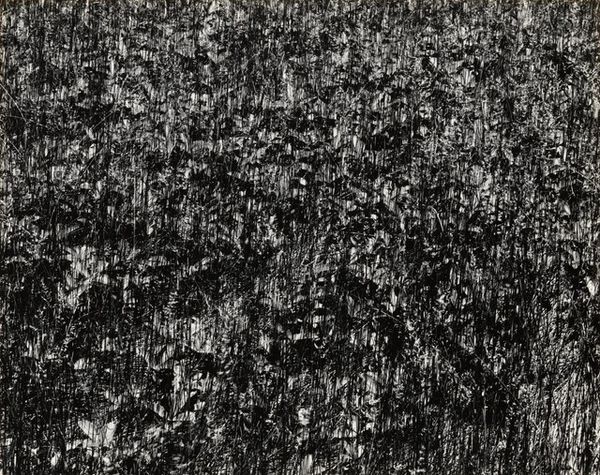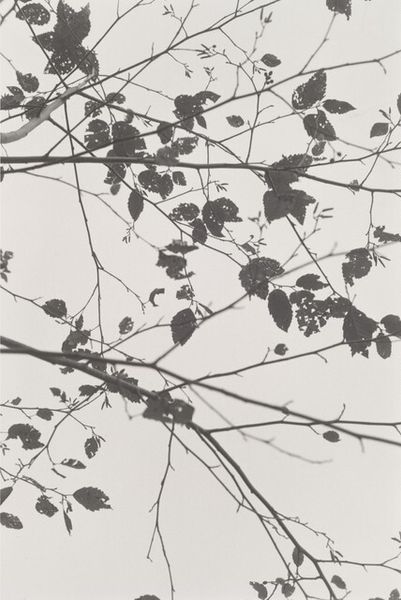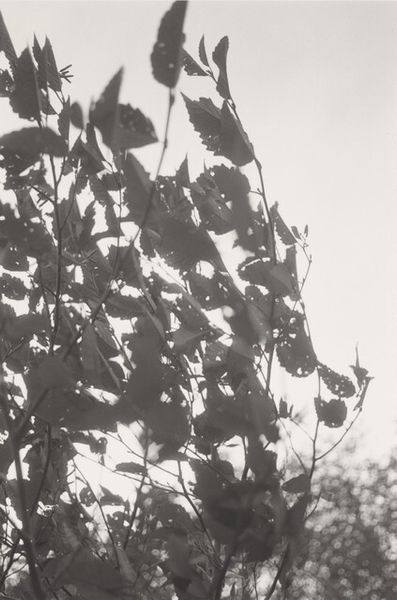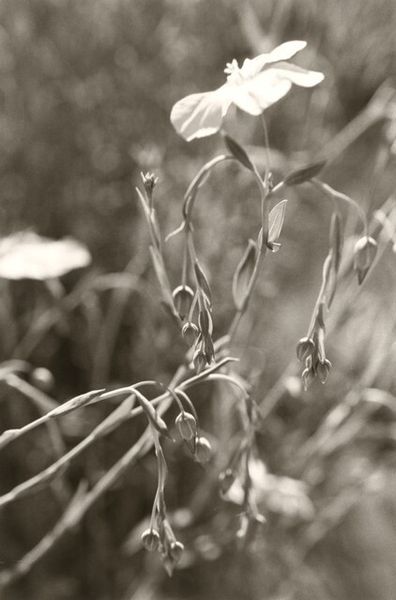
Dimensions: sheet (trimmed to image): 11 x 10.9 cm (4 5/16 x 4 5/16 in.)
Copyright: National Gallery of Art: CC0 1.0
Curator: I am immediately struck by the contrast, a nearly stark chiaroscuro effect rendered in gelatin silver. It's almost violently graphic, but intriguing. Editor: What we’re observing is “Lake Michigan,” a 1947 photograph by Harry Callahan. Callahan, during the mid-20th century, often explored ordinary subjects with the tools of modernism to find both beauty and isolation in the everyday, something vividly on display here. Curator: Yes, but it’s the composition itself that grips me! Look at how Callahan has used lines of sharp grasses to disrupt an otherwise amorphous mass of shadowy foliage and the strangely positioned patch of sand. It has a deliberate unease. Editor: Callahan was greatly influenced by the New Bauhaus movement and sought to elevate photography to fine art. The Lake Michigan series demonstrates that aspiration: blurring the boundaries between realism and abstraction during a time when photography was finding its role as a documentary tool. His subjects were his family, the urban landscape, and, here, nature. He's after capturing experience over documentation, you could say. Curator: And what that experience offers formally is remarkable. Those stark lines, slicing through the greyscale like the sharp edge of a knife, invite repeated viewing, but there's also that tension – the chaotic darkness juxtaposed with these ordered lines that command the scene. Editor: Think about the cultural context, though. World War II had just ended. There's a prevailing mood in post-war American art to express an understanding of the human experience via non-literal expressions and subjective feelings; he uses his lens to seek intimate connections and project states of feeling through commonplace nature. Curator: So Callahan's 'Lake Michigan' becomes, in this reading, not just a representation of a landscape, but a stage upon which human emotions of this historical time period are projected via its forms and compositions, like a painting by de Kooning! The artist provides minimal contextual clues. The power, indeed, comes from this dynamic play. Editor: Precisely. This interplay makes it, in my opinion, a significant piece within the landscape photography of the modernist era, not simply for its aesthetic value but also for what it conveys culturally. Curator: I see the cultural layer a bit clearer now.
Comments
No comments
Be the first to comment and join the conversation on the ultimate creative platform.
